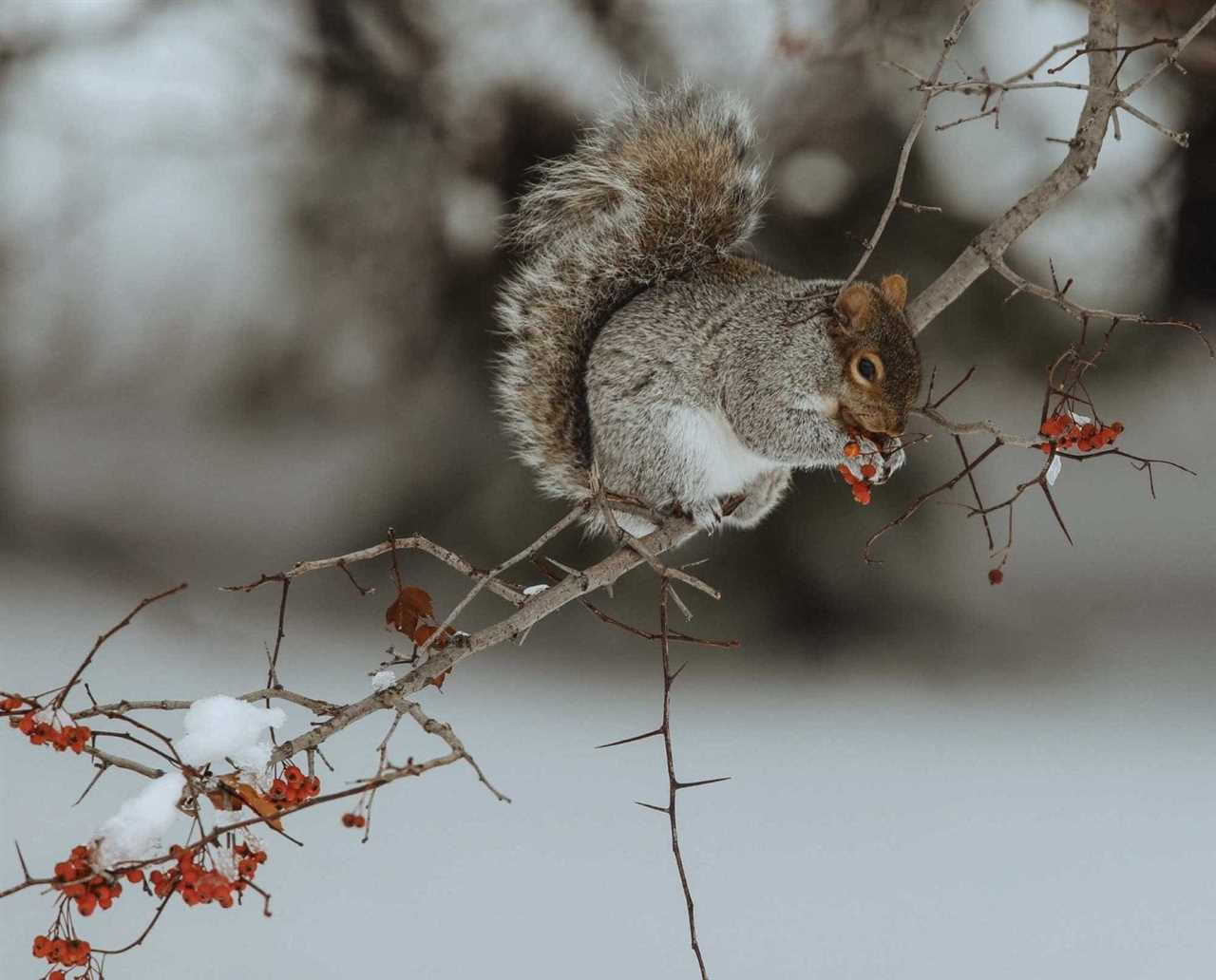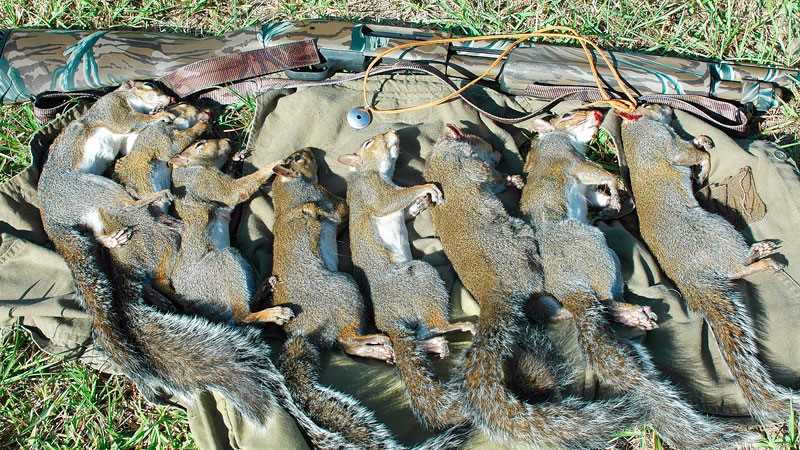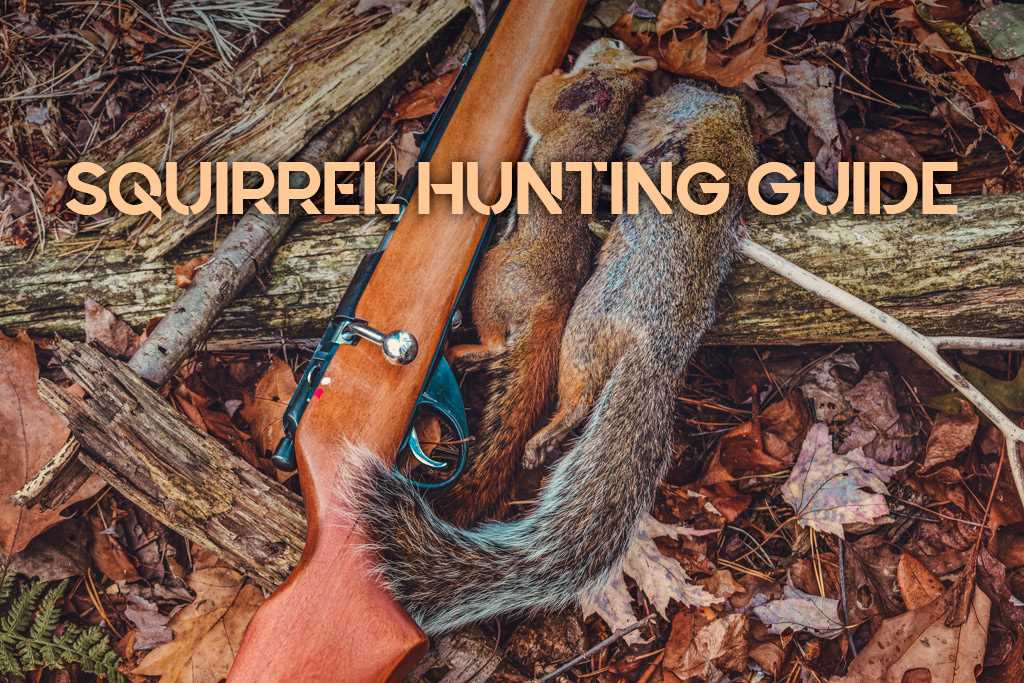Contents
Master the Art of Squirrel Hunting in Minnesota: Expert Tips, Techniques, and Top Hunting Spots Revealed

If you’re a nature enthusiast who loves the thrill of hunting, then squirrel hunting in Minnesota is an activity you must try. With its diverse forested landscapes and abundant squirrel population, Minnesota offers a unique hunting experience for both seasoned hunters and beginners alike.
Known for its beautiful wilderness and rich wildlife, Minnesota provides the perfect setting for squirrel hunting. Whether you’re hunting for meat, practicing your marksmanship, or simply enjoying the adventure, this guide will provide you with valuable tips, techniques, and the best locations to make the most out of your squirrel hunting experience.
When it comes to squirrel hunting in Minnesota, one of the first things you need to know is the hunting regulations and seasons. It’s important to familiarize yourself with the specific rules for squirrel hunting, including bag limits and firearm restrictions, to ensure a safe and legal hunting outing. Additionally, obtaining the necessary licenses and permits is crucial, so be sure to check with the Minnesota Department of Natural Resources for the most up-to-date information.
Once you’ve taken care of the legalities, it’s time to prepare yourself for a successful squirrel hunting adventure. Some essential tips for squirrel hunting in Minnesota include mastering your camouflage techniques, using squirrel calls to attract your prey, and selecting the right firearm and ammunition. Remember that patience and stealth are key when it comes to squirrel hunting, as these agile creatures can be quite aware of their surroundings.
Now, let’s talk about the best locations for squirrel hunting in Minnesota. With its vast forests and wooded areas, the state offers numerous prime hunting spots. Some popular locations include the Chippewa National Forest, Superior National Forest, and the Minnesota Valley National Wildlife Refuge. These areas are known for their thriving squirrel populations and provide ample opportunities for a successful hunt.
So, gear up, pack your essentials, and head to Minnesota for an unforgettable squirrel hunting experience. With the right preparation, techniques, and knowledge of the best locations, you’ll have a thrilling adventure in the breathtaking wilderness of Minnesota.
Tips for Successful Squirrel Hunting

When it comes to hunting squirrel, there are a few key tips that can help you have a successful hunt. Here are some important things to keep in mind:
1. Scout the area: Before heading out, spend some time scouting the area you plan to hunt in. Look for signs of squirrel activity such as chewed nuts, droppings, and nests. This will give you a better idea of where to set up your hunting spot.
2. Use the right gear: When squirrel hunting, it’s important to have the right gear. A .22 caliber rifle or a shotgun with a modified choke are both good options. Make sure to also wear camouflage clothing to blend in with your surroundings.
3. Hunt during the right time of year: Squirrel hunting is best during the fall and winter months when the foliage is less dense and squirrels are more active. Early morning and late afternoon tend to be the most productive times to hunt.
4. Be patient and quiet: Squirrels have excellent hearing and can easily be spooked by loud noises. Move slowly and quietly as you search for squirrels and wait patiently for them to come within range.
5. Aim for the head or vitals: When shooting a squirrel, aiming for the head or vitals is essential for a clean kill. This will ensure that the squirrel is quickly and ethically dispatched.
6. Practice good safety habits: Always practice safe hunting habits when out in the field. This includes keeping your firearm pointed in a safe direction, wearing blaze orange clothing to be visible to others, and knowing your target and what is beyond it.
By following these tips, you’ll be well on your way to having a successful squirrel hunting trip in Minnesota!
Choosing the Right Equipment

When it comes to squirrel hunting in Minnesota, having the right equipment is essential. Not only will it make your hunting experience more successful, but it will also ensure that you are following all necessary regulations and safety precautions.
Here are a few things to consider when choosing your hunting equipment:
- Firearm: In Minnesota, you are allowed to hunt squirrels with a firearm, such as a shotgun or a rimfire rifle. Be sure to check the specific regulations for the area you plan to hunt in to determine what type of firearm is allowed.
- Ammunition: The type of ammunition you use can greatly affect your success. When hunting squirrels, it is recommended to use smaller calibers, such as .22 or .17, to minimize damage to the meat.
- Optics: While not essential, a good pair of binoculars can make a big difference when scouting for squirrels. Look for a pair that offers clear, sharp images and is lightweight and compact for easy carrying.
- Clothing: In the Minnesota woods, it is important to dress appropriately for the weather and terrain. Be sure to wear durable camouflage clothing to blend in with your surroundings and protect yourself from thorns, brush, and other hazards.
- Accessories: Consider bringing a few additional accessories, such as a squirrel call, to attract the squirrels closer to your location. Additionally, a small game hunting vest can be helpful for carrying extra ammunition, snacks, and other essentials.
Remember, always prioritize safety when selecting your equipment. Be familiar with the regulations and guidelines set by the Minnesota Department of Natural Resources, and ensure that you are experienced and confident in handling your chosen firearm before heading out into the field.
By choosing the right equipment for squirrel hunting in Minnesota, you will increase your chances of a successful and enjoyable hunting experience. Happy hunting!
Mastering Stealth and Patience

When it comes to squirrel hunting, mastering the art of stealth and patience is crucial. Squirrels have keen senses and are incredibly agile, making them challenging targets. Here are some tips to help you become a stealthy and patient squirrel hunter:
Leave No Trace: Before entering the hunting area, make sure to eliminate any noise or odor that could alert squirrels to your presence. Avoid wearing strong-smelling perfumes or colognes, and try to move quietly and steadily through the terrain.
Choose the Right Camouflage: Wear hunting clothing that matches the natural environment you’ll be hunting in. This will help you blend in with your surroundings and make it harder for squirrels to spot you. Consider using a camouflage face mask and gloves to further conceal your presence.
Move Slowly and Quietly: Squirrels are quick and easily spooked. To increase your chances of getting close to them, move slowly and deliberately. Take small, quiet steps and avoid sudden movements that could startle them. Using binoculars can help you spot squirrels from a distance without alerting them to your presence.
Use Natural Cover: Take advantage of trees, bushes, and other natural cover to break up your silhouette and hide your movements. Position yourself near a tree trunk or behind a bush to make it more difficult for squirrels to detect you.
Practice Patience: Squirrel hunting requires patience. Once you’ve found a good spot, settle in and wait quietly. Squirrels are active creatures and can be unpredictable, so it may take some time for them to come within range. Be prepared to wait for the perfect shot.
Know Your Target: It’s important to be able to identify squirrels from other animals, especially when hunting in heavily wooded areas. familiarize yourself with their appearance and behaviors to avoid mistakenly shooting at other wildlife.
| Best Locations for Squirrel Hunting in Minnesota |
|---|
| • Sherburne National Wildlife Refuge
• Carlos Avery Wildlife Management Area • Rum River State Forest • Forestville Mystery Cave State Park • Rum River Central Regional Park |
By mastering the art of stealth and patience, you can greatly enhance your squirrel hunting skills. Remember to always follow hunting regulations and prioritize safety during your hunting adventures.
Understanding Squirrel Behavior

Squirrels are a common sight in Minnesota, and understanding their behavior can greatly improve your chances of a successful hunt. These small, agile creatures are known for their quickness and ability to climb trees with ease.
One important aspect of squirrel behavior to consider is their feeding patterns. Squirrels are predominantly herbivorous, and their diet consists of nuts, seeds, fruits, and vegetation. They have a preference for certain types of nuts, such as acorns and walnuts, and will often store them in caches for later consumption.
Squirrels are most active during the early morning and late afternoon, generally avoiding the midday heat. They are diurnal animals, meaning they are primarily active during daylight hours. This is the best time to spot them scurrying around and foraging for food.
When it comes to hunting squirrels, it’s important to understand their behavior when threatened. Squirrels are highly alert and have excellent vision and hearing. They will often freeze in place when they sense danger, relying on their camouflage to blend in with their surroundings. This makes them difficult to spot, so it’s important to move slowly and quietly to avoid alarming them.
Squirrels are also known for their territorial behavior. They will defend their territories from intruders, including other squirrels. This can be useful for hunters, as observing territorial boundaries can lead you to areas with a higher squirrel population.
Another behavior to be aware of is the squirrel’s ability to communicate. They use a variety of vocalizations, including chattering, chirping, and barking, to communicate with other squirrels. These vocalizations can indicate the presence of predators or other potential threats, giving you a clue as to where squirrels may be located.
| Key Points to Understand: |
|---|
| – Squirrels are herbivorous and have a preference for nuts |
| – They are most active during early morning and late afternoon |
| – Squirrels will freeze when threatened and rely on camouflage |
| – They are territorial and defend their territories from other squirrels |
| – Squirrels use vocalizations to communicate with each other |
By understanding squirrel behavior and applying this knowledge to your hunting strategy, you can increase your chances of a successful and rewarding squirrel hunt in Minnesota.
Techniques for Squirrel Hunting

When it comes to squirrel hunting, having the right techniques can greatly increase your chances of success. Here are some tips to help you become a more efficient squirrel hunter:
1. Use the stalk and wait technique: Squirrels are very agile and can easily sense danger. Instead of chasing them, find a comfortable spot and wait for them to come to you. This technique requires patience, but it can be very effective.
2. Camouflage is key: Squirrels have keen eyesight and can pick up on movement easily. Wear clothing that matches the natural environment and use face paint or a mask to blend in. This will make it harder for squirrels to spot you.
3. Scout the area: Before you go hunting, take the time to familiarize yourself with the area. Look for squirrel signs such as nests, chewed nuts, and droppings. This will help you determine where the squirrels are active and increase your chances of a successful hunt.
4. Learn squirrel behavior: Squirrels follow predictable patterns and behaviors. They are most active in the early morning and late afternoon. Knowing their feeding and nesting habits can help you plan your hunting trips more effectively.
5. Practice your aim: Squirrels are small targets, so it’s important to have good accuracy. Spend time at the shooting range to improve your marksmanship and get comfortable with your hunting rifle.
6. Use squirrel calls: Squirrels are territorial creatures and respond to calls. Mimic squirrel sounds using a squirrel call or your mouth to attract them closer. This can be a useful technique, especially when combined with the stalk and wait method.
7. Safety first: Always prioritize safety when squirrel hunting. Make sure you have the appropriate licenses and permits, wear eye and ear protection, and be aware of your surroundings. Treat every firearm as if it’s loaded and never point it at anything you don’t intend to shoot.
Remember, squirrel hunting requires patience, skill, and respect for nature. By using these techniques and practicing ethical hunting, you can have a successful and enjoyable hunting experience.
Still Hunting

Still hunting is a popular method of hunting squirrels in Minnesota. This technique involves slowly moving through the woods and scouting for squirrels from a stationary position. It can be an effective way to hunt squirrels, especially in areas with dense foliage where sneaking up on them may be difficult.
When still hunting, it’s important to move quietly and make minimal noise to avoid spooking the squirrels. Slowly scan the trees for movement or listen for rustling in the leaves, as squirrels are known for their quick movements and ability to blend in with their surroundings.
Choosing the right location is crucial for successful still hunting. Look for areas with abundant food sources, such as nut-bearing trees or areas with a high density of acorns. Squirrels are also more active during the early morning or late afternoon, so targeting these times can increase your chances of spotting them.
One effective technique for still hunting is to find a comfortable spot near a known squirrel habitat and wait patiently. Use binoculars to scan the trees and focus on areas where squirrels are likely to be present, such as near nests or in the vicinity of food sources.
Still hunting can be a challenging but rewarding way to hunt squirrels in Minnesota. With the right skills, patience, and knowledge of squirrel behavior, it can be a successful technique for bagging some of these energetic and elusive animals.
Stalking

Stalking squirrels in Minnesota can be an exhilarating and challenging experience. By employing a few key techniques and strategies, hunters can increase their chances of success in taking down these elusive creatures.
One of the most important aspects of stalking squirrels is being able to move silently and blend into the natural surroundings. This means wearing camouflage clothing that matches the local vegetation and moving slowly and deliberately through the forest. It is essential to minimize noise and avoid sudden movements that could startle the squirrels.
When stalking squirrels, it is crucial to be patient and observant. Look for signs of squirrel activity, such as chewed nuts and acorns, nests, or fresh droppings. By scanning the treetops and listening for rustling sounds, hunters can identify the presence of squirrels and plan their approach accordingly.
Another effective technique for stalking squirrels is using a stealthy approach called “still-hunting.” This involves finding a good vantage point and waiting quietly for squirrels to come within range. By positioning oneself near a known feeding area or travel route, hunters can increase their chances of a successful shot.
It is also helpful to learn about the feeding and nesting habits of squirrels in Minnesota. These animals are active during the early morning and late afternoon, so those times can be ideal for stalking. Additionally, squirrels tend to prefer hardwood forests with plenty of nut-producing trees, so focusing on these areas can increase the chances of encountering them.
Remember to always follow local hunting regulations and obtain any necessary permits before embarking on a squirrel hunting expedition in Minnesota. Be respectful of private land and obtain permission from landowners if hunting on private property.
With proper skills, equipment, and knowledge of squirrel behavior, stalking squirrels in Minnesota can be a rewarding and exciting activity for any hunter.
Calling

Squirrel calling can be an effective technique for attracting squirrels in Minnesota. By mimicking the sounds that squirrels make, you can entice them to come closer and investigate. Here are a few tips for using calling techniques:
1. Learn the sounds of Minnesota squirrels: Before you start calling, it’s important to familiarize yourself with the different vocalizations that squirrels in Minnesota make. This includes sounds like barks, chatters, and squeaks. By understanding these sounds, you can effectively mimic them to attract squirrels.
2. Use a squirrel call: There are various squirrel calls available on the market that can help you mimic the sounds of squirrels. These calls typically imitate the distress calls or alarm calls of squirrels, which can trigger their natural curiosity and draw them closer.
3. Practice your calling technique: Calling squirrels takes practice, so spend some time honing your skills. Try to mimic the sounds of squirrels as accurately as possible, using variations in pitch, tone, and duration. Practice in different outdoor settings to imitate the natural environment of Minnesota squirrels.
4. Combine calling with other hunting techniques: While calling can be effective on its own, it can be even more successful when combined with other hunting techniques. For example, you can set up a decoy or use scent attractants to create a more realistic and enticing hunting experience for squirrels.
5. Choose the right location: When using calling techniques, it’s important to scout and choose the right location in Minnesota. Look for areas with high squirrel populations, such as oak or hickory forests, where squirrels are more likely to respond to your calls. Additionally, try to find areas with sufficient cover for you to hide and remain undetected.
Remember to always follow local hunting regulations and obtain the necessary licenses and permits before squirrel hunting in Minnesota.

A skilled hunter, dedicated conservationist, and advocate for ethical practices. Respected in the hunting community, he balances human activity with environmental preservation.
